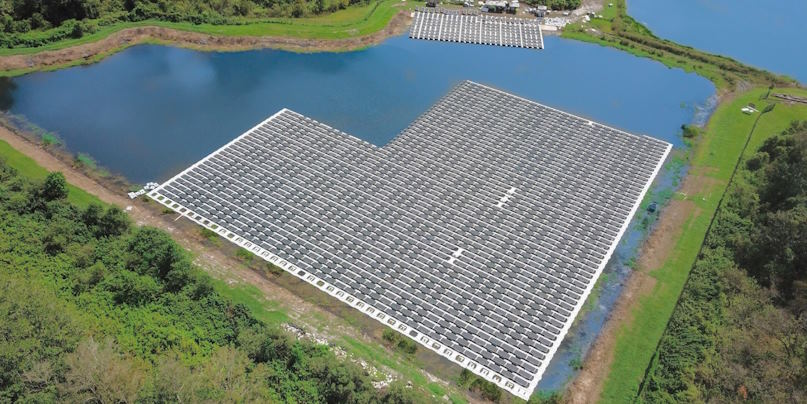Floating hydroelectric power plants have emerged as a promising and innovative approach to harnessing the energy of flowing water. As the world seeks sustainable solutions to meet its growing energy demands, the efficiency of floating hydroelectric power plants becomes a critical factor to consider.
What are floating hydroelectric power plants, and how do they work?
Floating hydroelectric power plants, also known as floating hydropower or floating hydrokinetic systems, are innovative installations that generate electricity from water flow in rivers, lakes, or oceans.
Unlike traditional hydroelectric power plants that require the construction of large dams and associated infrastructure, floating hydroelectric systems utilize floating platforms equipped with turbines to capture the energy of moving water. As water flows around the floating platform, it exerts a force on the turbines. This force drives the turbines’ rotation, converting the moving water’s kinetic energy into mechanical energy.
It’s important to note that floating hydroelectric power plants can incorporate additional features to optimize performance and address site-specific conditions. These may include systems for flow regulation, monitoring equipment, and environmental mitigation measures to minimize any potential impacts on aquatic ecosystems.
What are the benefits of floating hydroelectric power plants?
Floating hydroelectric power plants offer several benefits that make them an efficient option for renewable energy generation. Here are some of them:
Utilization of Existing Water Bodies
Floating hydroelectric power plants can utilize existing water bodies such as rivers, lakes, reservoirs, and oceans without needing large-scale land acquisition or the construction of dams. It makes them highly adaptable and flexible for deployment in diverse locations, including areas where traditional hydroelectric power plants are not feasible.

Increased Efficiency Potential
Planting platforms can capture more energy from flowing water by strategically positioning turbines in areas with optimized flow conditions and reduced hydraulic losses, resulting in increased electricity generation.
Minimal Environmental Impact
Unlike large-scale dam construction associated with conventional hydroelectric power plants, floating hydroelectric systems have a relatively low environmental impact. They do not require extensive land clearing or disrupt natural river flow, which helps preserve ecosystems, habitats, and aquatic biodiversity.
Flexibility and Scalability
Floating hydroelectric power plants offer scalability, allowing for the installation of various sizes and capacities to match local energy needs. They can be deployed modularly, allowing for incremental expansion or relocation as energy demands evolve or new suitable water bodies are identified.
Synergy with Other Technologies
Floating hydroelectric power plants can be combined with other renewable energy technologies, such as floating solar panels or tidal energy systems, to create hybrid power generation projects. These combinations allow for the optimal use of available resources and diversification of energy sources, enhancing overall efficiency and resilience.
